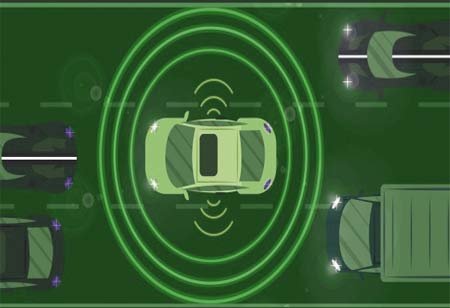THANK YOU FOR SUBSCRIBING
THANK YOU FOR SUBSCRIBING
Be first to read the latest tech news, Industry Leader's Insights, and CIO interviews of medium and large enterprises exclusively from Auto Tech Outlook

By
Auto Tech Outlook | Wednesday, April 17, 2024
Stay ahead of the industry with exclusive feature stories on the top companies, expert insights and the latest news delivered straight to your inbox. Subscribe today.
With the advancement of automation in vehicles, we are witnessing the first-ever application of new technology to the automotive sector and the maturation of automotive technologies to meet the unique demands of autonomous driving.
Fremont, CA: These days, sensors are an essential component of every modern car design, having numerous uses. They play a crucial role in assisting automakers in releasing models that are more comfortable to drive, safer, and more efficient with fuel. Sensors will eventually make it possible for vehicles to be more automated, which will be advantageous for the sector.
Following are the sensor technologies that define the future of cars:
Intelligent Observation:
One of the requirements to allow an autonomous car to function is intelligent observability, in addition to complete controllability and data processing. Cars will need to handle a wide range of parametric data, such as speed, current, pressure, temperature, positioning, proximity detection, gesture recognition, etc., to achieve full observability. Significant advancements in proximity detection and gesture recognition have been seen in recent years, with time-of-flight (ToF) cameras and ultrasonic sensors being installed in automobiles.
Ultrasonic Sensors:
With the advancement of automation in vehicles, we are witnessing the first-ever application of new technology to the automotive sector and the maturation of automotive technologies to meet the unique demands of autonomous driving. For assisted parking systems, ultrasonic sensors are usually installed in car bumpers. Currently, it is anticipated that these sensors will only operate at speeds below 10 km/h and will not be able to measure small distances with 100 percent precision. However, when combined with cameras, radar, and other sensing technologies, these sensors can measure distance in an autonomous vehicle.
Gesture Recognition:
ToF cameras are aimed at the automobile's interior, while ultrasonic sensor technology is employed to watch the outside world. Given that the shift to autonomous driving will occur gradually, drivers must be able to return from autonomous to manual mode under certain circumstances.
ToF technology is being used today, albeit in its early stages. For example, it can alert drivers when they lose focus and allow their car to drift toward the road's edge. Additionally, it makes it possible for other gesture-based operations to be performed, such as raising the radio volume or taking incoming calls with hand swipes. However, ToF's potential application goes far beyond these kinds of jobs, and as this technology advances, it will be essential to developing increasingly complex driver automation. To determine if a driver's hands are on the wheel and whether their head is facing the road ahead, ToF cameras can map the entirety of a driver's upper body in three dimensions.
These are the major sensor technologies that will revolutionize the future of cars. 3D mapping of traffic conditions also comes under these technologies. The envisioned autonomous driving experience will eventually be determined by the next generation of sensors that are now under development. Thanks to innovation in the areas mentioned in this insight, future cars will provide a clear, continuously updated picture of what is happening in the external world and what their occupants are doing. For this reason, sensing technology will be crucial to the automotive industry's future.
 Copyright © 2025 AutoTech Outlook. All Rights Reserved | Privacy Policy | Subscribe | Sitemap | About us | Feedback Policy | Editorial Policy
Copyright © 2025 AutoTech Outlook. All Rights Reserved | Privacy Policy | Subscribe | Sitemap | About us | Feedback Policy | Editorial Policy 



